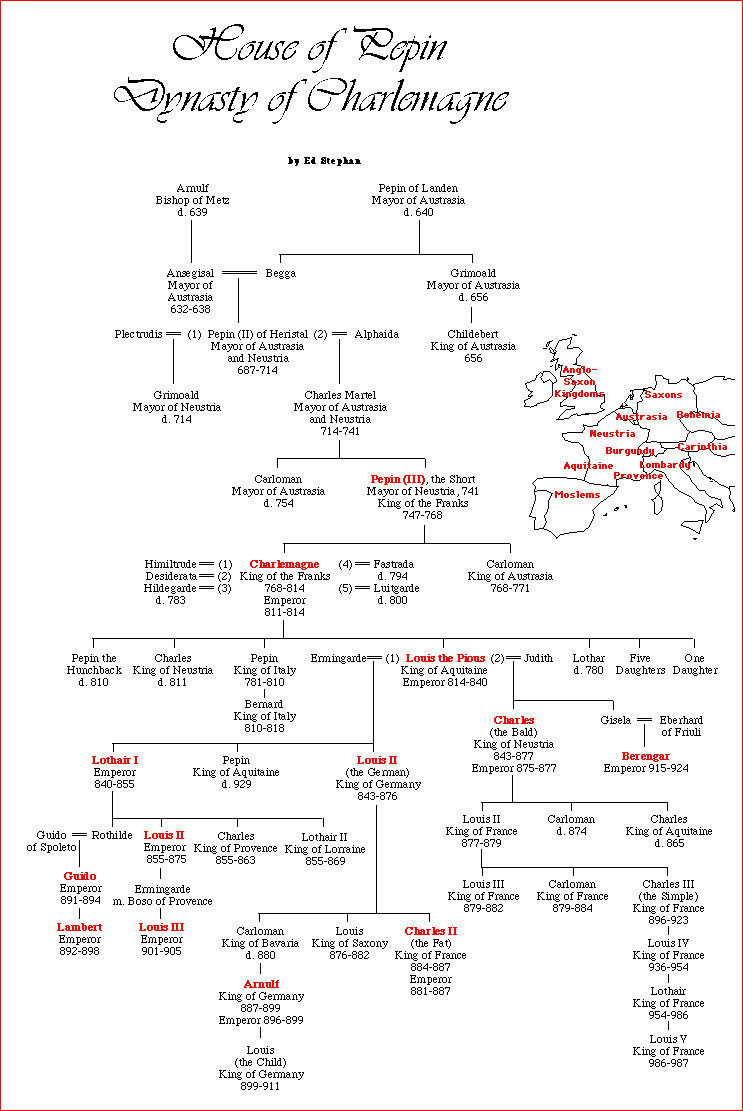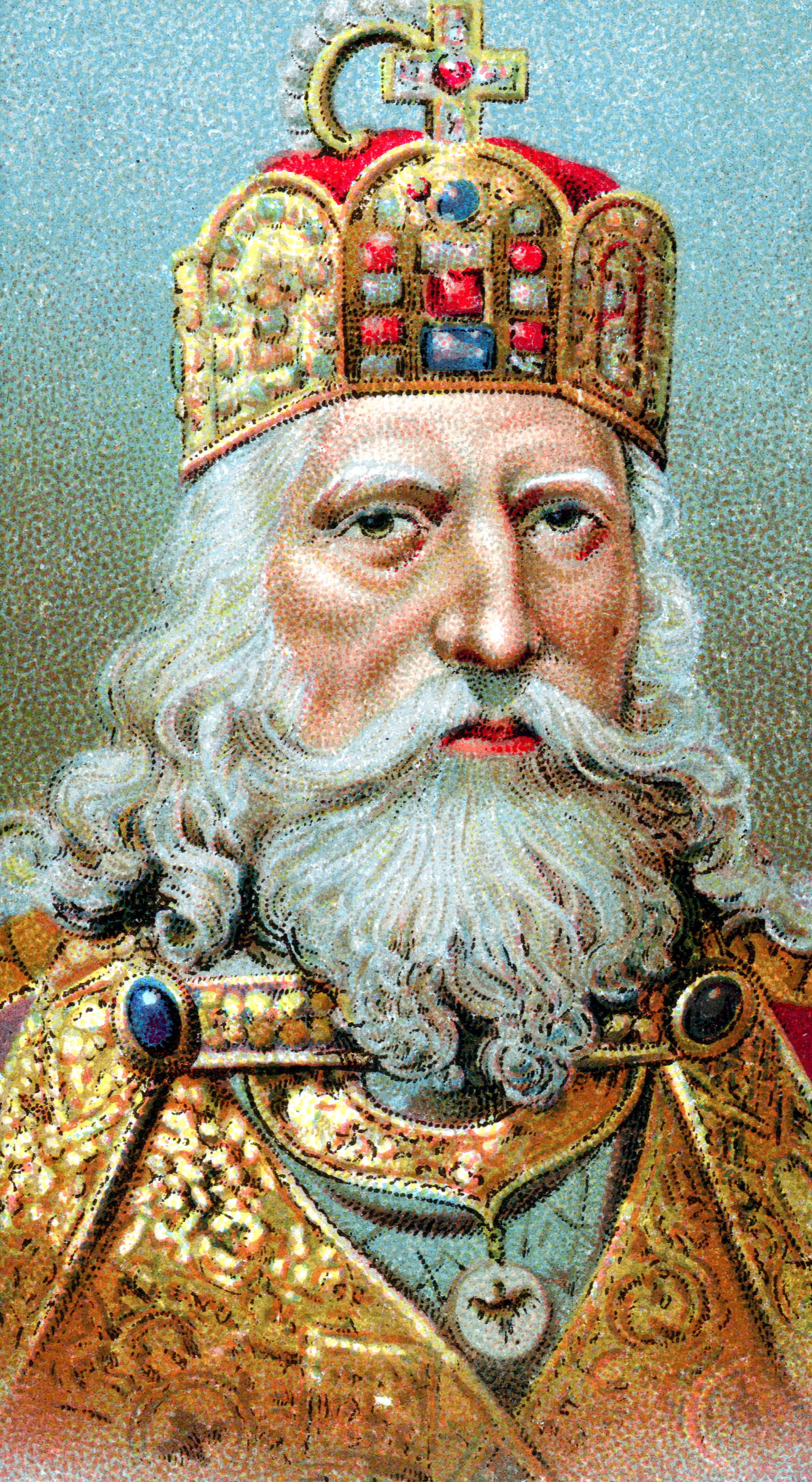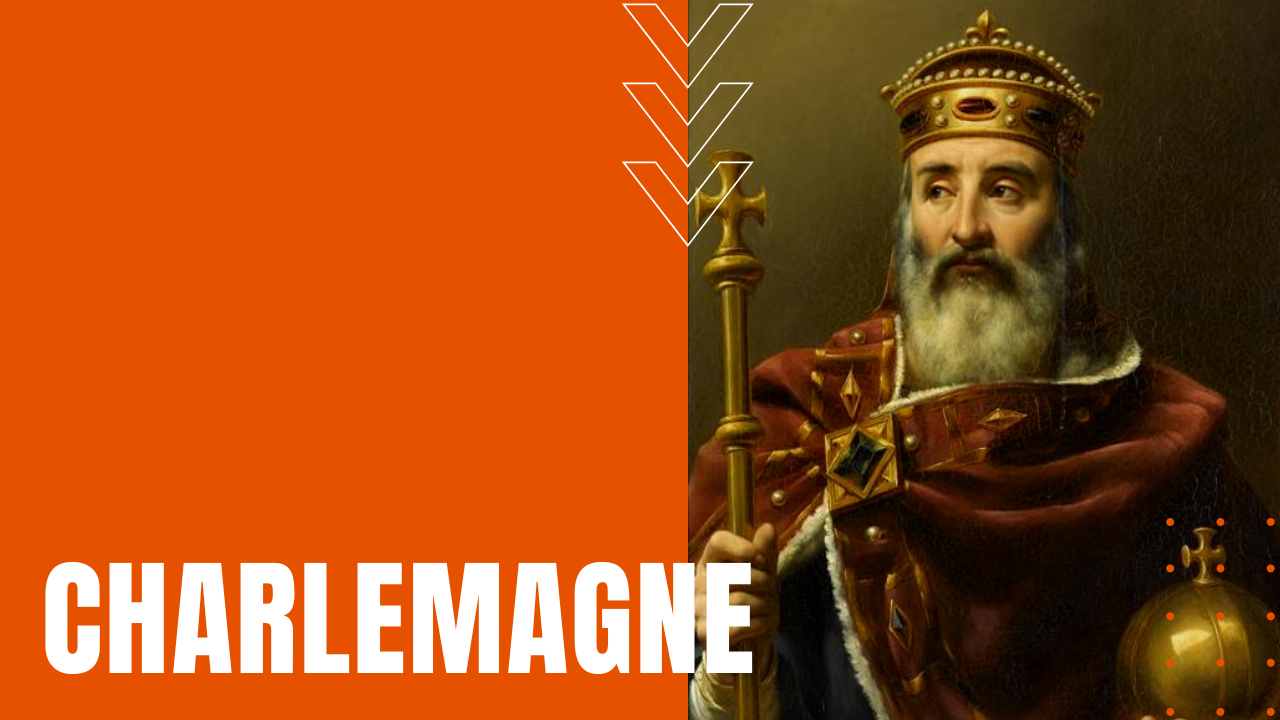Charlemagne, the iconic ruler of the Carolingian Empire, is not just a historical figure but a fascinating character whose personal life has intrigued scholars and history enthusiasts alike. If you’ve ever wondered who Charlemagne married to, you’re not alone. This article dives deep into the life of one of history’s greatest leaders, exploring his matrimonial journey and uncovering the women who stood by his side. So, buckle up because we’re about to embark on an epic tale of power, love, and legacy.
Before we dive into the details, let’s set the stage. Charlemagne, also known as Charles the Great, was more than just a king—he was a visionary who united much of Europe under his rule. His reign wasn’t just about battles and conquests; it was also about building alliances, fostering culture, and yes, finding the right partner. But who exactly was the woman—or women—behind the man who changed history? Let’s find out.
As we explore the intricacies of Charlemagne’s personal life, we’ll uncover not just his marriages but also the impact these relationships had on his empire. This isn’t just about names and dates; it’s about understanding the human side of a legendary ruler. So, whether you’re a history buff or simply curious, this article has something for everyone.
Read also:Steuart Walton The Untold Story Of Walmarts Quiet Mogul
Table of Contents
- Charlemagne’s Biography
- Who Is Charlemagne Married To?
- Charlemagne’s First Wives
- Later Wives and Consorts
- The Children of Charlemagne
- Impact of Charlemagne’s Marriages
- Historical Context of Charlemagne’s Marriages
- Charlemagne’s Legacy Through His Marriages
- Sources and Further Reading
- Conclusion
Charlemagne’s Biography
Before we delve into the question of who Charlemagne married to, let’s take a moment to understand the man himself. Born around 742 AD, Charlemagne inherited the Frankish throne from his father, Pepin the Short. His reign, which spanned from 768 to 814, saw the expansion of the Frankish kingdom into what is now modern-day France, Germany, Italy, and beyond. He wasn’t just a conqueror; he was a patron of the arts, a reformer, and a unifier.
Charlemagne’s legacy extends far beyond his military achievements. He’s often credited with laying the foundation for the Holy Roman Empire and initiating the Carolingian Renaissance, a period of cultural revival in Europe. But behind every great man, there’s often a great woman—or in Charlemagne’s case, several women. So, who exactly did the Great Charles choose as his life partners?
Early Life and Rise to Power
Charlemagne’s early life was marked by turmoil and opportunity. Born into the Carolingian dynasty, he grew up in a world of intrigue and politics. His father, Pepin the Short, had already set the stage for greatness, and young Charles was groomed to take the reins. By the time he ascended the throne, Charlemagne was ready to make his mark on history.
But ruling an empire wasn’t just about wielding a sword; it was also about forging alliances, and that often meant marrying for political gain. Charlemagne’s marriages weren’t just personal choices; they were strategic moves that helped solidify his power and influence across Europe. Let’s take a closer look at the women who played a role in shaping his legacy.
Who Is Charlemagne Married To?
Now, let’s get to the heart of the matter: who is Charlemagne married to? The answer, as it turns out, is not so straightforward. Charlemagne was married multiple times during his life, and each marriage had its own significance. From political alliances to personal connections, Charlemagne’s matrimonial journey was as complex as his reign.
Throughout his life, Charlemagne married at least four times, and he also had several concubines. This wasn’t uncommon for rulers of his time, where marriage was often a tool for diplomacy and dynasty-building. But who were these women, and what role did they play in Charlemagne’s life and empire?
Read also:Pablo Torre Wife Photo A Closer Look At His Life Love And Journey
Marriage as a Strategy
Charlemagne’s marriages weren’t just about love; they were about strategy. Each union brought something valuable to the table, whether it was political alliances, territorial gains, or dynastic stability. For example, his marriage to Desiderata, the daughter of the Lombard king, was a move to secure peace with a powerful rival. However, this marriage didn’t last long, and Charlemagne soon annulled it in favor of a more advantageous union.
But it wasn’t all politics. Charlemagne also had marriages that were deeply personal, where love and companionship played a significant role. Let’s explore some of these unions in more detail.
Charlemagne’s First Wives
Charlemagne’s first marriages set the tone for his later relationships. These early unions were often politically motivated, but they also laid the foundation for his growing empire. Let’s take a look at some of the women who became Charlemagne’s first wives.
Desiderata: The First Attempt
Charlemagne’s first recorded marriage was to Desiderata, the daughter of the Lombard king Desiderius. This marriage was a strategic move to forge an alliance with the Lombards, a powerful kingdom in Italy. However, the marriage didn’t last long. Charlemagne annulled it after just a year, possibly due to political pressure or personal reasons. This decision marked the beginning of a long-standing feud between Charlemagne and the Lombards.
Hildegard: The Love of His Life
After Desiderata, Charlemagne married Hildegard of Vinzgouw, a woman who would become one of the most important figures in his life. Hildegard was not only a beautiful woman but also a shrewd political ally. Their marriage produced several children, including Louis the Pious, who would go on to succeed Charlemagne as emperor. Hildegard’s influence extended beyond the bedroom; she played a significant role in shaping Charlemagne’s policies and decisions.
Later Wives and Consorts
After Hildegard’s death, Charlemagne continued to marry and take on concubines. These later unions were often less about love and more about securing alliances or producing heirs. Let’s explore some of these relationships.
Fastrada: The Controversial Queen
One of Charlemagne’s later wives was Fastrada, a woman whose name is often associated with controversy. Fastrada was reportedly a powerful and ambitious queen who wielded significant influence over Charlemagne. Some historians suggest that her influence may have contributed to Charlemagne’s decision to invade Saxony, a move that led to years of bloody conflict. Whether this is true or not, Fastrada remains one of the most intriguing figures in Charlemagne’s life.
Luitgard: The Final Wife
Charlemagne’s final wife was Luitgard, a woman who married him late in life. Their marriage was childless, and Luitgard passed away shortly before Charlemagne himself. While their union was brief, it highlights the continued importance of marriage in Charlemagne’s life, even as he aged and his empire began to wane.
The Children of Charlemagne
Charlemagne’s marriages and relationships resulted in a large family. He had numerous children with his wives and concubines, many of whom played important roles in the history of the Carolingian Empire. Here are some of the most notable children:
- Louis the Pious: Charlemagne’s successor and one of his most famous sons.
- Rothrude: A daughter who was betrothed to the Byzantine emperor’s son, highlighting Charlemagne’s diplomatic ambitions.
- Pepin the Hunchback: A son who rebelled against Charlemagne, illustrating the complexities of royal family dynamics.
Charlemagne’s children were not just heirs to his throne; they were also tools of diplomacy and instruments of his legacy. Each child played a role in shaping the future of Europe, ensuring that Charlemagne’s influence would endure long after his death.
Impact of Charlemagne’s Marriages
Charlemagne’s marriages had a profound impact on his empire and the course of European history. Through these unions, he secured alliances, expanded his territory, and strengthened his dynasty. But the impact went beyond politics; Charlemagne’s relationships also influenced the cultural and social fabric of his time.
For example, his marriage to Hildegard brought stability to his court and helped foster the Carolingian Renaissance. Meanwhile, his relationships with concubines and lesser-known wives highlight the complexities of royal life in the early Middle Ages. These unions weren’t just about love or power; they were about building a lasting legacy.
Historical Context of Charlemagne’s Marriages
To truly understand Charlemagne’s matrimonial choices, we need to place them in their historical context. In the 8th and 9th centuries, marriage was a powerful tool for rulers. It was a way to secure alliances, consolidate power, and legitimize one’s rule. Charlemagne’s marriages were no exception.
At the time, Europe was a patchwork of kingdoms and tribes, each vying for power and influence. Charlemagne’s ability to navigate this complex landscape through strategic marriages was a key factor in his success. His unions with powerful families and influential figures helped him build the Carolingian Empire and lay the groundwork for modern Europe.
Charlemagne’s Legacy Through His Marriages
Charlemagne’s legacy is inextricably linked to his matrimonial choices. Through his marriages, he forged alliances, produced heirs, and shaped the future of Europe. His unions weren’t just personal decisions; they were strategic moves that helped solidify his power and influence.
Today, Charlemagne is remembered not just as a conqueror but as a unifier and a visionary. His marriages played a significant role in this legacy, highlighting the importance of personal relationships in shaping history. As we reflect on the question of who Charlemagne married to, we’re reminded of the complexities and nuances of power, love, and legacy.
Sources and Further Reading
If you’re interested in learning more about Charlemagne and his marriages, here are some sources to check out:
- The Life and Times of Charlemagne by Eleanor Shipley Duckett
- Charlemagne: Father of a Continent by Alessandro Barbero
- The Carolingians: A Family Who Forged Europe by Pierre Riché
These books provide valuable insights into Charlemagne’s life and the historical context of his reign. They’re a great starting point for anyone looking to delve deeper into the world of the Carolingian Empire.
Conclusion
In conclusion, the question of who Charlemagne married to is more than just a historical curiosity; it’s a window into the complexities of power, love, and legacy. Through his marriages, Charlemagne forged alliances, produced heirs, and shaped the future of Europe. His unions weren’t just personal choices; they were strategic moves that helped him build one of the greatest empires in history.
So, the next time you think about Charlemagne, remember that behind every great man is a great woman—or in this case, several women. Their stories are just as important as his, and they help us understand the full picture of this legendary ruler. If you enjoyed this article, feel free to share it with your friends or leave a comment below. And if you’re hungry for more history, be sure to check out our other articles on the fascinating world of the Middle Ages.



